One of the things that we will agree on from the onset is that faucets are pretty commonplace fixtures. You will find them in kitchens, bars, washrooms, and other places. However, these kitchen sink faucets can easily be ignored until there is a serious leakage, very slow water flow, or any problem. Interestingly, there are various classifications of kitchen faucets.
While this is a fact that is often not known to many homeowners, this information comes in handy when choosing the best kitchen faucet for your property. You will need to identify the right kind of your faucet if you need a replacement. You will also need to choose the right type for new installations.
More importantly, understanding the construction of the various types available comes in handy in identifying possible issues and addressing them adequately.
Like every other plumbing fixture, your choice of a kitchen faucet should leverage functionality, convenience, performance, and aesthetics. Of course, faucets come in a variety of colors and feature different characteristics. But all faucets still fall under the four primary types that we will discuss in this blog post.
Classification of Faucets in Terms of Construction
In terms of construction, faucets either have washers or not. And while many models are washerless, there are still notable differences.
When it comes to construction, the four popular types of faucets include;
1. Ball Faucets
The first and arguably the oldest types of faucets are ball faucets. They are high performers, and you will find them in kitchens and other high-use environments. These are washerless models that you will most likely find in kitchen environments. You can easily identify them with single-handle control mechanisms.
As their name suggests, ball types of faucets use ball joints to control the water flow. Through the single-handle, you can appropriately mix cold and hot water to meet your needs. Apart from water temperature, the handle also controls the water pressure.
Using ball faucets is pretty easy. You can make good use of the single handle situated at the top of the spout to adjust after pressure by moving it up or down. Simultaneously, you can achieve the right water temperature by moving the handle left or right.
The biggest advantage that you will enjoy if you opt to go with this type of faucet is that they are not prone to breakage or leakage. That is not an advantage that you will find on models with washers. And if you value utility, then you will find single-handle control incorporated in ball types conveniently.
2. Cartridge Faucets
Unlike ball faucets which are common in kitchens, cartridge models are more common in bathrooms. They feature dual handles and are equally great performers. They are nearly indistinguishable from compression washer faucets, but you will experience a different feel on the handle.
The handle has an up-and-down motion for cartridge faucets during the twisting action that turns the water off or on. A half turn turns the water on from the off position.
The cartridge that the manufacturers incorporate into the system necessitates the up and down movements as you control water flow. Unlike compression options, the movements in cartridge faucets are smooth and consistent.
Interestingly, the more the cartridge moves up, the more the water is released into the mixing chamber. The continuous action of cartridge movement increases the water pressure. You can also conveniently open the cold and hot cartridges in the right ratios to control the water temperature.
3. Disc Faucet
Just like the first two types discussed earlier, ceramic disc faucets are also washerless. It is a relatively new technology that takes credit as the most modern technology in the faucet industry. The relatively modern technology used in manufacturing these faucets, their durability, and reliability standards are probably why they generally cost more than the other models.
They feature a single lever-like ball faucet. However, the lever sits on a wide cylindrical body for disc faucets, while ball faucets have their lever on a shaped cap. Disc faucets feature a pressure balance cartridge, which acts as the mixing chamber in which cold and hot water mix.
Interestingly, these models feature two ceramic discs at the bottom of the chamber that will consistently lower and raise to control the water volume that comes from the faucet. On the other hand, sideways rotation of the handle.
Ceramic disc faucets stand out as incredibly reliable, high-quality, and easy to maintain.
4. Compression Washer Faucets
We end this review with a washer model. Compression washer faucets are also relatively conventional models as they have been in the market for indoor plumbing. These models are common in older homes, but you will find many updated versions in newer homes with utility sinks.
They are the only washer models in this list and form an incredible option if you are working on a strict budget. But one demerit that you should keep an eye on is the possibility of endless issues. Repairing them is pretty easy, though.
They feature different cold and hot water handles and use compression stems to work. The compression stems are a type of screw with washers at the bed and press against a valve seat.
Just like the cartridge models, the compression washer faucets also feature double handles. However, they exhibit a tight rotating movement that helps to stop the flow of water.
Classification of Faucets According to Reachability
The second method of classifying faucets is reachability. It is one of the factors to consider when buying a kitchen faucet. How far can your faucet spout extend into the sink or away from it? Interestingly, this factor determines the level of versatility and convenience that you can achieve with your faucet.
The three common types of faucets in this category include;
i. Stationary or Fixed Faucets
These are the oldest types of faucets available on the market. They feature fixed heads but come with side sprayers for additional convenience. Thus, you shouldn’t expect them to be so old-school.
They are incredibly more affordable than movable options. These models are also simpler, easier to use, and less prone to faults. But when it comes to kitchen faucet installation, you will need an extra hole on your sink and an extra plumbing line for the separate sprayer often included.
ii. Pull-Down Faucets
These are some of the most modern types of faucets you will find. They feature a spout that conveniently pulls down through an attached hose. The counterweight on the neck aids the pull-down mechanism. So, you can easily get this sink whenever you need it. At the same time, the hose enables the spout as needed.
Characteristically, these faucets have tall, gooseneck spouts and inbuilt sprayers, making them pretty convenient. You will love them for deep sinks in busy kitchens.
iii. Pull-out faucets
You cannot talk about reachability in faucets and forget to mention pull-out faucet models. They are similar to pull-down options because they also feature an inbuilt sprayer that works as a fixed faucet whenever the pull-out function is not in use.
However, whereas pull-out models have bodies that work in straight lines, pull-down models' body construction can easily bend. Pull-out models take pride in a 360-degree spraying potential. Such a feature makes them your favorite faucet for cleaning fruits and vegetables. You will also find them ideal for filling pots and pans from countertops. However, keep watch of children lest you flood the entire cook space.
Classification of Faucets According to Lever or Handles
Call them handles or levers; this is the traditional means of controlling faucets. In this classification method, faucets are either touchless, single-handled, or dual-handled.
Let’s see the difference!
a. Dual-Handle Faucets
These are more old-school than the other two types. However, they still exist. They feature separate levers for controlling warm and cold water. Interestingly, these handles can both be attached to the central piece or separately on either side of the central piece. Either way, they will always move in opposite directions.
Notably, dual-handle faucets will require separate connections for hot and cold water supply. While you may need both hands to control these systems, temperature adjustments are more accurate.
b. Single-Handle Faucets
Single-handle faucets only have a single lever that controls water flow. You can move the lever to the left or to the right to control hot and warm water, respectively. On the other hand, up and down lever movement controls water pressure.
You can operate these systems using one hand, hence simpler to use. However, getting the right water temperature can be a nightmare and requires patience. And unlike dual-handle options, which are considerably more voluminous, single-handle models are compact. Thus, they take up less space on your countertop.
c. Touchless Faucets
Call them hands-free, motion-oriented, or touchless faucets; these are the most advanced types of faucets. They efficiently detect motion and have reliable motion sensors. However, these fixtures are not entirely touchless. Many of them are hybrid and come with manual controls in case the automatic controls fail.
These models are arguably the safest and perfectly ideal for homes with children.
Classification of Faucets According to The Spout Design
Faucets come in different styles and designs. Apart from providing stylish options for kitchen décor, various faucet designs also feature different functional capabilities. And that’s another way of classifying faucets.
a. Straight Spout Faucets
These are the most common models. That's why you will find it in nearly every home kitchen. Their biggest advantages include unbeatable usability, unmatched simplicity, and incredible compactness. Their only demerit is that their short structures leave little room beneath the spout. They are not the right types of faucets for filling large pots and containers.
b. Pot Filler or Gooseneck Faucets
Faucets with gooseneck spouts are ideal for busy kitchens and restaurants. You can either mount them on your deck or the wall. Interestingly, have a large space beneath the spout for filling oversized pots. You may not need them if you are not a serious chef.
Final Words
What else would you want to know about the common types of kitchen faucets?
We based our classifications on the construction mechanism, reachability, spout design, and handle type. We hope that you can now differentiate faucets based on types and classification methods.
Excitingly, the type of kitchen faucet you opt for will depend on your budget and the required convenience. The intended function and ease of maintenance, too, will play a big part. While some of the types feature high upfront costs, they are easier to maintain as they are less susceptible to any issues. Thus, the upfront cost alone may not determine how cheap or expensive a kitchen faucet is. You may need to look into the cost of faucet repair and susceptibility to problems.
Should you have any questions about kitchen faucets, you are free to interact with us through the comment box below.




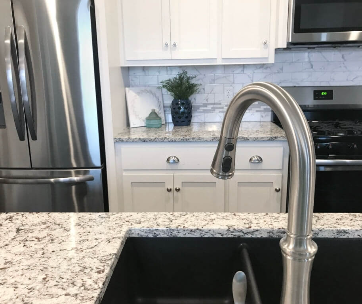

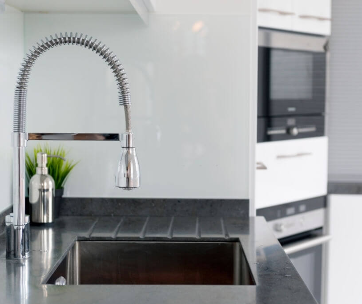

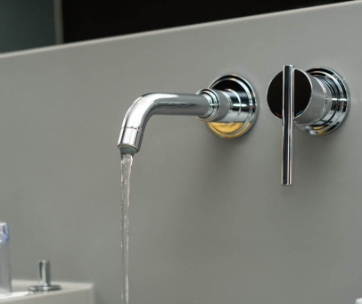
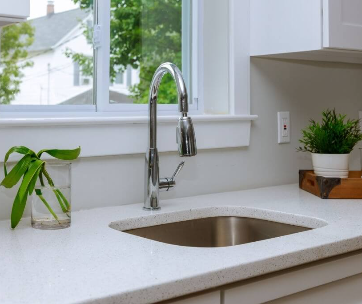

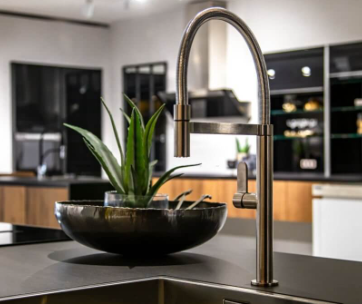
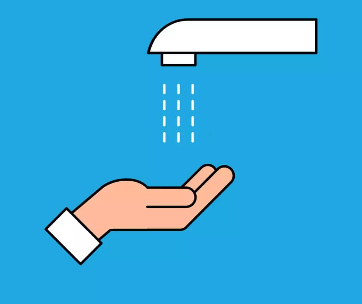
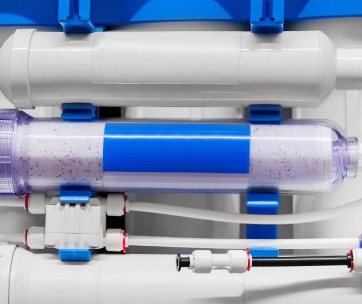
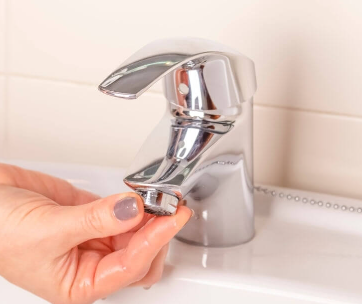
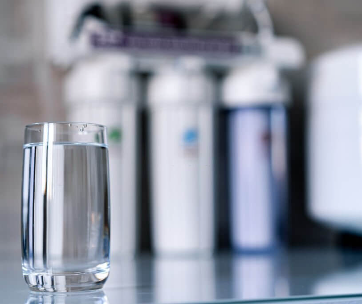
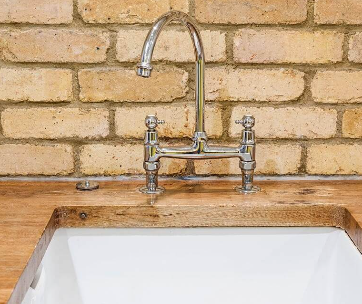
Comments